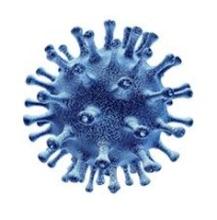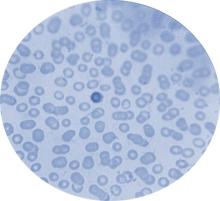Microbiology
Microbiology is considered one of the main disciplines of biology, because without knowledge of microorganisms, it is impossible to understand the entire diversity and evolution of life on the Earth. Microbiology introduces students to the world of microorganisms (bacteria, yeast, molds) and their cell structure, physiology, biochemistry, and genetics. Microorganisms are ubiquitous and play important roles in the flow of energy and matter on Earth, in particular different groups of microorganisms participate in nitrogen and carbon circles. Microorganisms are producers of many biologically active substances such as vitamins, amino acids, antibiotics, etc. Microorganisms are diverse in metabolic processes and use different energy and carbon sources for nutrition, being autotrophs, heterotrophs, anaerobes, aerobics, etc. Many biochemical properties of microorganisms are used in industry, in particular their ability to ferment different substrates. Some microorganisms are pathogenic and able to cause infectious diseases. The issues such as cell structure of bacteria, kinetics of microbial growth, environmental factors affecting microbial growth and mechanisms of adaptation of microorganisms to external challenges; genetic variability and antibiotic resistance as well as taxonomy of microorganisms is studied in this course. The course also describes the main methods of microbiological research (sterilization, cultivation and identification of microorganisms, staining, microscopy, etc.).
Microbiology and its disciplines. The role of microorganisms in the environment and human life. The history of microbiology. The place of microorganisms among living organisms. General principles of taxonomy of microorganisms. Phylogenetic taxonomy of bacteria.
Sizes of microorganisms. The shapes of bacteria. Unicellular mycelial fungi. Yeast.
The main differences between prokaryotes and eukaryotes. The general structure of a bacterial cell. Structure and chemical composition of cell walls of prokaryotes. Surface structures of the cell wall: fimbriae, F-pili, and flagella. Movement of bacteria. Taxis. Capsules and mucus. Membrane and its derivatives. Cytoplasm and cytoplasmic inclusions. Genetic apparatus of bacteria. Dormant forms in bacteria.
Individual growth of bacterial cells. Reproduction of bacteria. Growth of microbial population. Methods of estimating growth and viability of microorganisms. Continuous bacterial cultures. Synchronous bacterial cultures.
Physical factors - temperature, humidity, osmotic pressure, hydrostatic pressure, light, electricity, ultrasound. Chemical factors - pH, oxygen, and chemical compounds.
Nutrient requirements of microorganisms. Nutritional types of microorganisms. Energy-producing pathways in microorganisms. Carbohydrate metabolism in microorganisms: initial stages of conversion of carbohydrates. Types of fermentation: alcoholic, lactic acid, propionic acid, and butyric acid fermentation. The application of fermentation in industry.
Aerobic respiration during assimilation of organic substrates. Incomplete aerobic oxidation of organic substrates. Anaerobic respiration. Use of energy of inorganic substrates. Use of light energy (photosynthesis).
Biosynthesis of carbohydrates. Biosynthesis of amino acids. Biosynthesis of lipids. Biosynthesis of secondary metabolites.
The role of microorganisms in the nitrogen cycle. Ammonification of organic nitrogen-containing compounds. Nitrification. Denitrification. Fixation of atmospheric nitrogen. Symbiotic and free-living nitrogen fixers. Mechanism of biological nitrogen fixation.
Basic terms in the genetics of microorganisms. Genetic material: bacterial chromosome and plasmids. Non-hereditary and heritable variability (mutations and genetic recombinations) and its importance for microorganisms. Genetic engineering of microorganisms.
General characteristics and classification of antibiotics. Characteristics of the main groups of antibiotics according to the mechanism of action. Natural and acquired resistance to antibiotics. Methods of determining sensitivity to antibiotics.
Pathogenicity of bacteria. Ways by which microorganisms escape the immune system. Bacterial exotoxins and endotoxins. Forms of infection. Periods of the infectious process. Antimicrobial immunity: overview.





